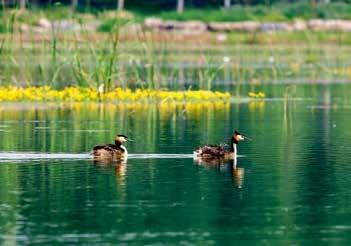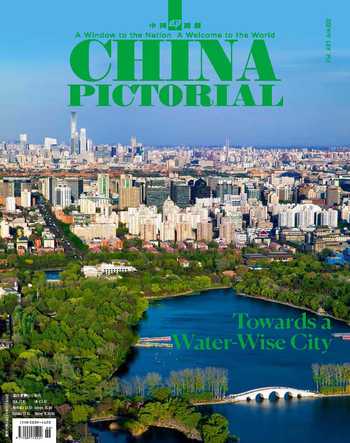Protecting Deer Wetlands
by Zhou Chenliang
On the evening of April 7, 2022, the Beijing Milu Ecological Research Center, also known as Beijing Nanhaizi Milu Park, welcomed its first baby Milu deer this year. Born in the Year of the Tiger, it was named “Luhu”(meaning “Tiger Deer”).
Based on the number of fertile adult female Milu deer in the park, researchers estimate about 40 babies will be born this year.
Milu deer, also known as Père Davids deer, is one of the worlds rare and endangered species endemic to China. Its origins can be traced back to 2 to 3 million years ago. The deer were once widely spread throughout the wetlands along the Yangtze and Yellow rivers.
The wetland deer earned the odd nickname of “Sibuxiang”(literally, “Like none of the four”) for its unique features: a horses face, a donkeys tail, cow-like hooves, and a stags antlers. However, its special features are not a result of crossbreeding but shaped by the wetland environment.
Zhong Zhenyu, a research fellow at the Beijing Biodiversity Conservation and Research Center, explained that the wetland is not only the habitat of Milu deer, but also their shelter. The unique wetland environment is difficult for humans and large terrestrial mammals to navigate, but easy for Milu deer.

Their hooves as big and flat as buffalos help them avoid sinking in the swamps. Their long tails swat mosquitoes and flies away easily. Because of their long faces, they can constantly keep their eyes above water while eating aquatic plants.
Wetlands in Nanhaizi
The same wetlands that host Milu deer are also closely linked to human survival and development. One of the most diversified ecological landscapes on our planet, wetlands offer an important living environment for humans too. Their ecological value earned them the nickname “kidney of Earth” as one of the three major ecological systems of our planet alongside forest and ocean.
Beijing Nanhaizi Milu Park, formerly a royal hunting garden, is located on a vast wetland created by various waterways.
The area was home to many wild Milu deer. According to historical records, the Yongding River wound around Nanhaizi, which was famous for its rich water resources and beautiful environment. So, it became a royal hunting garden and summer resort, coexisting with imperial palaces since the Liao Dynasty (907-1125).


